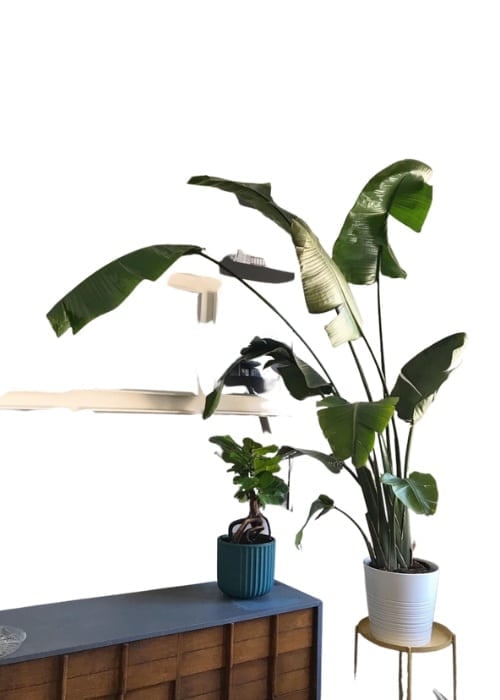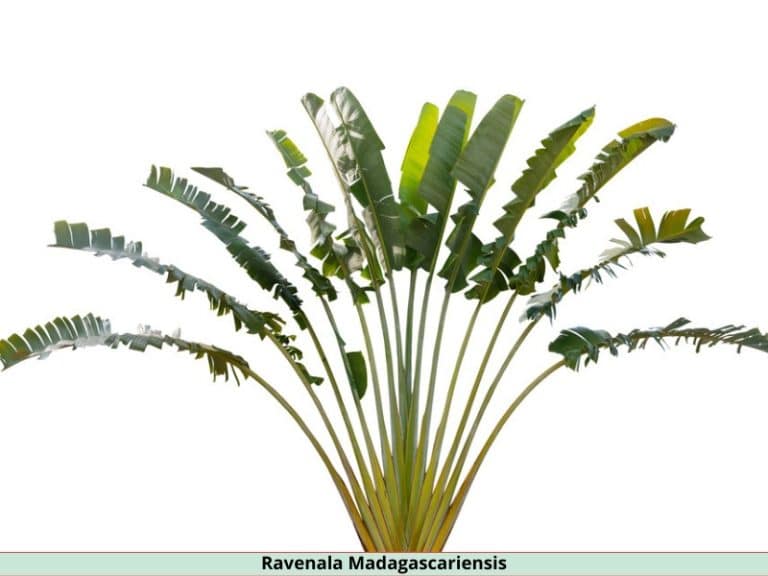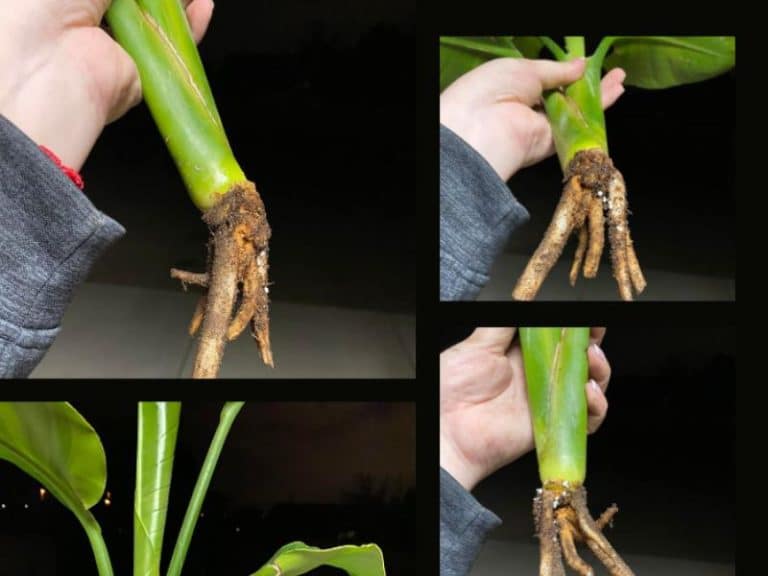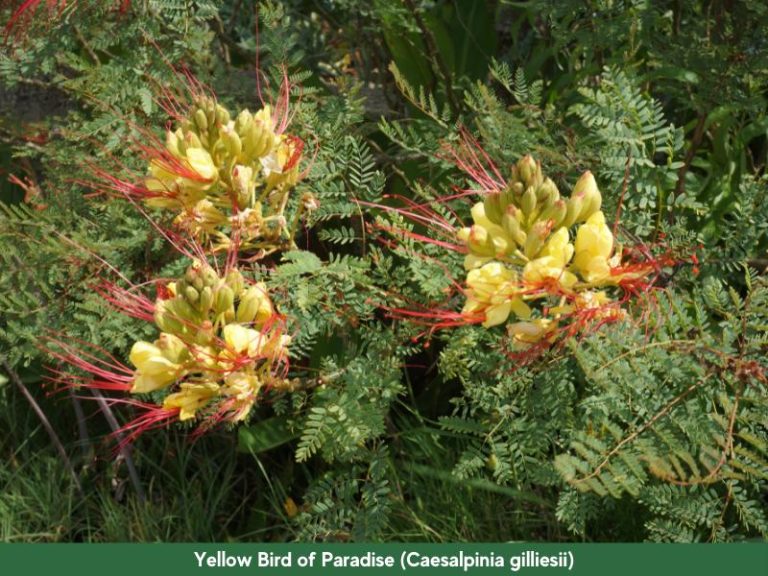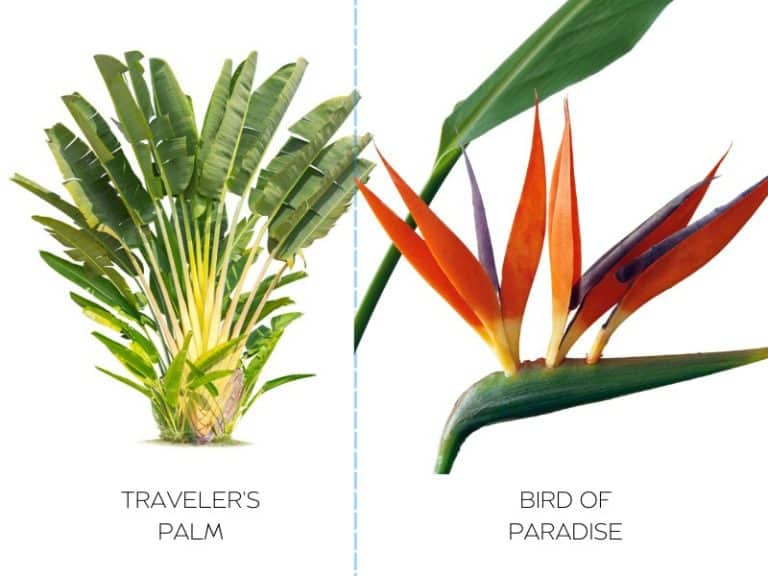Bird of Paradise Leaves Splitting: Reasons + What to Do
A healthy bird of paradise plant has full, undamaged leaves. Still, you might have to deal with splitting leaves sometimes. It is natural, but it’s unattractive. Preventing and controlling leaf splitting on your plant will give you the visual appeal you want.
In summary, here are the four main reasons why bird of paradise leaves split:
- Too much sun or wind
- Animal activity on the plant
- Water management problems
- Nutrient deficiencies
You can prevent and control bird of paradise leaves splitting by removing the leaves, moving the plant to a more suitable spot, and fixing the nutrient inadequacies.
Why do birds of paradise leaves tear?
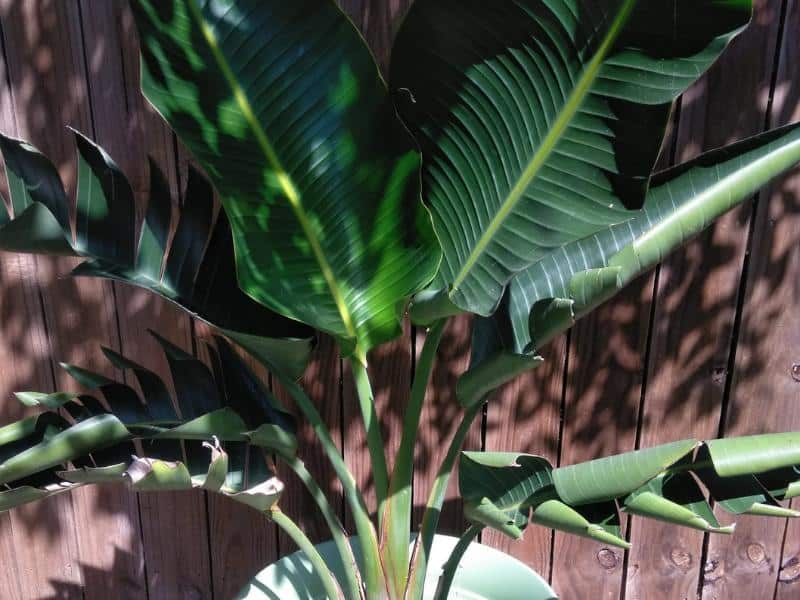
Bird of a paradise leaves are naturally prone to unraveling and splitting. The natural splitting usually occurs on mature leaves as part of growth.
Splitting may be widespread, even on young leaves that shouldn’t split.
Accidents and animal activity
Human beings and pet activity can cause splitting on the leaves of the bird of paradise. The plant is likely to incur some damage in heavy traffic areas. Curious pets sometimes chew on the plant leaves, causing tears on the leaves.
Knocking and bumping over the plant is going to cause splits. Poor handling of bird of paradise usually leads to an unattractive plant.
You can minimize damage from animals and humans if you plant a protective fence around the plant.
Unfavorable climatic conditions
Strong winds
Birds of paradise leaves can reach up to 6 feet in controlled environments. Strong winds can cause downward pulling on the leaves, leading to splits on bird of paradise leaves.
Indoor plants are susceptible to strong air currents from powerful air conditioners.
Excess sunlight and prolonged dry conditions
Although this plant loves sunlight, too much sunlight is detrimental. During sunny days, the leaves can also split as they dry.
Low humidity
The bird of paradise is a tropical plant. Low humidity areas leave the plant prone to splitting. When the atmosphere is dry, the bird of paradise leaves become fragile and eventually split. Air conditioning and indoor heating can also cause low humidity in the house, affecting your indoor bird of paradise.
Underwatering
Water is used to transport nutrients in the bird of a paradise plant. Bird of paradise plant will dry out if it is not receiving the required amount of water. Drier plants are more susceptible to splitting.
There is reduced water during the dry season and low humidity. Water scarcity creates the conditions for leaf splitting.
Nutrient deficiencies
Nutrients such as copper, manganese, and boron are vital in leaf formation and stability. Manganese is essential in vegetative growth, and it promotes green leaf development. Calcium gives the plant structure and strength and promotes cell formation and growth. Boron is responsible for the structural support of the plant.
Instability or lack of these vital nutrients turns the leaves yellow, brittle, and vulnerable to splitting.
Infections
Bacterial and fungal infections are common in plants. If you do not provide proper care for bird of paradise plants, they may be prone to diseases.
While bird of paradise doesn’t have serious infestation problems, the plant is susceptible to leaf blight, mealybugs, and bacterial wilt. Fungal diseases such as leaf blight make the leaves weaker and prone to splitting.
The huge leaves are more exposed to attacks from bugs and fungal infestation.
What to do when leaves are splitting
The bird of paradise plant has big leaves. Long leaf splits are typical. The leaves, however, don’t repair themselves and can eventually die.
Identify the reasons for the splitting before using these corrective methods.
Here’s what to do when the leaves of your bird of paradise plant are splitting:
1. Remove the leaves
Usually, the splitting of leaves is irreversible, and no proper remedies will repair them. Removing and discarding the affected leaves is one of the effective solutions.
If the bird of paradise plant has enough leaves, pick the damaged ones and discard them.
Pruning of bird of paradise plants is necessary to remove the split leaves and the dead leaves. Cut the leaves before the onset of winter to encourage new growth before the onset of spring. Using pruning shears, cut cleanly the leaves that are damaged or drooping.
2. Fix nutrient and water deficiencies
Well-nourished bird of paradise plants are better equipped to resist splitting. Applying a balanced fertilizer during summer or spring fixes nutrient deficiencies.
You can also apply a Boron-Mg-Zinc compound fertilizer for the vibrant color and health of the leaves. These nutrients result in strong leaves that will not crack or split easily.
You should also ensure that the plant receives adequate water. Water the plant every one to two weeks and allow it to dry before watering again. Avoid using chlorinated water to prevent the browning of the leaves.
Treat any diseases that have infected the leaves using fungicides and removing the infected leaves.
3. Move the potted plants into indirect sunlight
If the plants are too exposed to sunlight, you should move them near shade to reduce the effect of the strong direct sunlight. Additionally, ensure that the plant is kept away from strong winds.
To prevent accidents and mishandling, move the plant to a safer place.
You should treat the leaves and the plant gently.
To counter low humidity, sprinkle some water on the leaves regularly. Ensure the plant is not placed in the low humidity areas of the house. You can use a hygrometer to measure the humidity of the different areas to determine the best spot.
Also, a plant humidifier can be handy in increasing the humidity in the house, especially during the dryer winter months.
Move the potted plant to the more humid areas of the house, such as the bathroom. Bird of paradise plants can also be affected by winter and should be moved indoors at the onset of the cold season.
Should I cut damaged leaves from the bird of paradise?
Cut the leaves depending on the extent of the damage. You should cut them at the base of the stem if necessary.
Other issues that necessitate cutting of the leaves include the following:
- Leaf browning
- Drooping leaves
- Leaves that will not open.
In most cases, the splitting occurs on older leaves of bird of paradise. It is, therefore, better to remove them before they split.
Birds of paradise are grown for their beautiful flowers and large leaves. The bird of paradise is not a fussy plant and does not need high maintenance to thrive. The leaves are an integral part of the plant. Therefore, it is imperative to take care of them by pruning them and cleaning them.
Pay close attention to your plant before taking any drastic measures.


